Imperial War Museum
London UK Building Photos Thumbnails Buildings Home
|
Imperial War Museum In 1917 the Cabinet decided that a National War Museum should be set up to collect and display material relating to the Great War, which was still being fought. The interest taken by the Dominion governments led to the museum being given the title of Imperial War Museum. It was formally established by Act of Parliament in 1920 and a governing Board of Trustees appointed. At the outset of the Second World War the Imperial War Museum's terms of reference were enlarged to cover both world wars and they were again extended in 1953 to include all military operations in which Britain or the Commonwealth have been involved since August 1914. Photo 116, May 2015 |
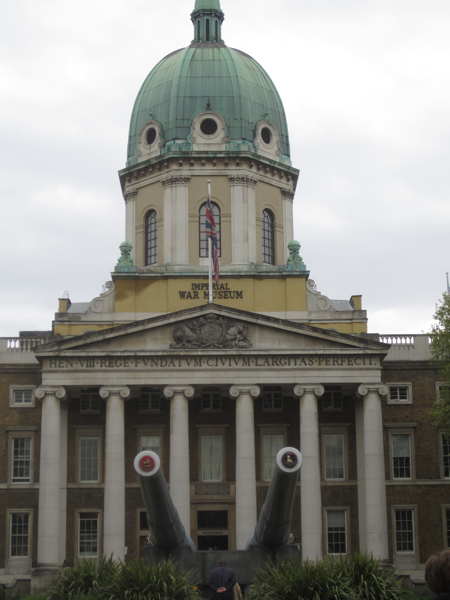
|
|
Tibetan Peace Garden (Samten Kyil) , Imperial War Museum In May 1999, His Holiness the Dalai Lama opened and consecrated the Tibetan Peace Garden next to the Imperial War Museum, London, UK. The Peace Garden was commissioned by Tibet Foundation and built on land kindly provided by Southwark Council. It has been donated to the people of Britain for all to enjoy. The Tibetan Peace Garden honours one of the principal teachings of His Holiness — the need to create understanding between different cultures and to establish places of peace and harmony in the world. It is hoped that it will create a deepening awareness of His Holiness’s thoughts and words. Photo 118, May 2015 |
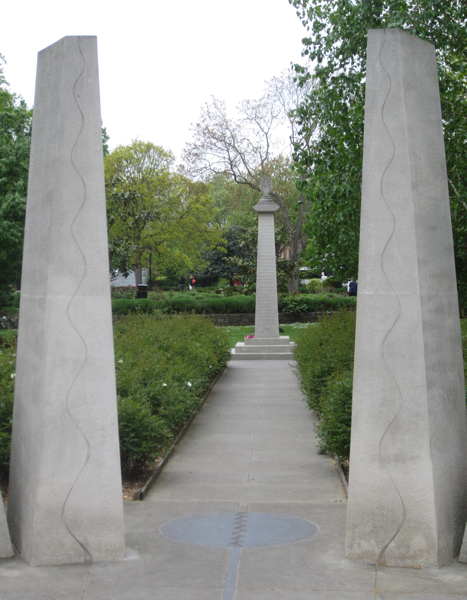
|
|
The Supermarine Spitfire, Imperial War Museum The Supermarine Spitfire is a British single-seat fighter aircraft that was used by the Royal Air Force and many other Allied countries during and after the Second World War. The Spitfire was built in many variants, using several wing configurations, and was produced in greater numbers than any other British aircraft. It was also the only British fighter to be in continuous production throughout the war. The Spitfire continues to be a popular aircraft, with approximately 53 Spitfires being airworthy, while many more are static exhibits in aviation museums all over the world. Photo 121a, May 2015 |
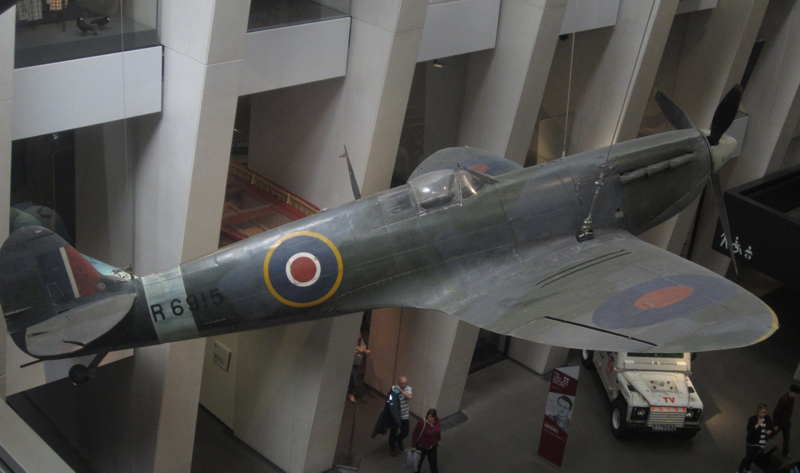
|
|
The Supermarine Spitfire, Imperial War Museum
Photo 123a, May 2015 |
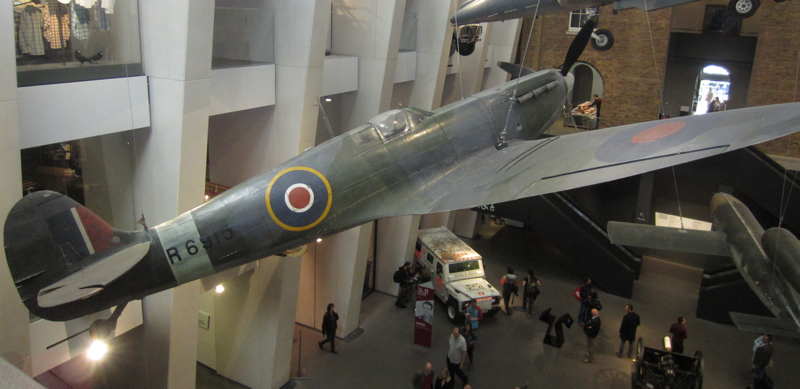
|
|
Soviet T-34 Tank, Imperial War Museum The T-34 was a Soviet medium tank which had a profound and lasting effect on the field of tank design. Although its armour and armament were surpassed later in the war, it has been often credited as the most effective, efficient, and influential tank design of World War II. At its introduction, the T-34 possessed an unprecedented combination of firepower, mobility, protection, and ruggedness. Its 76.2 mm high-velocity tank gun provided a substantial increase in firepower over any of the T-34's contemporaries; its heavy sloped armour was difficult to penetrate by most contemporary anti-tank weapons. First encountered in 1941, German tank general von Kleist called it "the finest tank in the world" and Heinz Guderian confirmed the T-34's "vast superiority" over German armour and found it "very worrying." Photo 120, May 2015 |
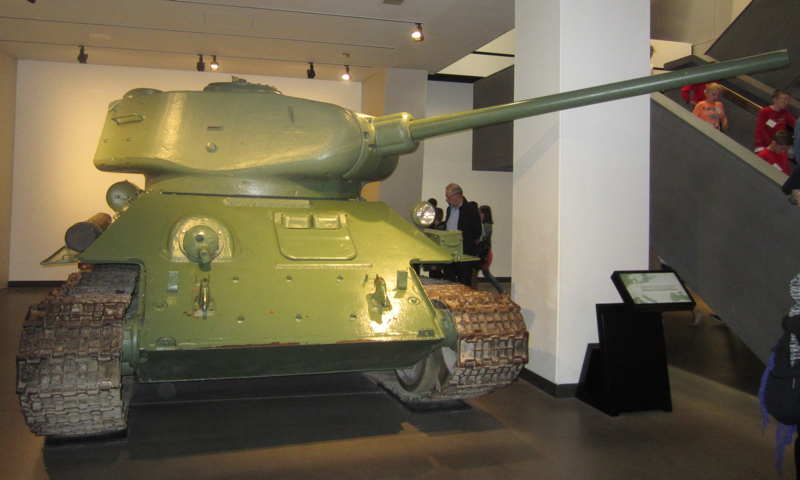
|
|
German V-2 on right and V-1 on lower left, Imperial War Museum The V-2 was the world's first long-range guided ballistic missile. The missile with liquid-propellant rocket engine was developed during the Second World War in Germany as a "vengeance weapon", designed to attack Allied cities as retaliation for the Allied bombings against German cities. The V-2 rocket was also the first man-made object to cross the boundary of space. Beginning in September 1944, over 3,000 V-2s were launched by the German Wehrmacht against Allied targets during the war, firstly London and later Antwerp and Liège. According to a 2011 BBC documentary, the attacks resulted in the deaths of an estimated 9,000 civilians and military personnel, while 12,000 forced laborers and concentration camp prisoners were killed producing the weapons. (V-1, see below) Photo 122, May 2015 |
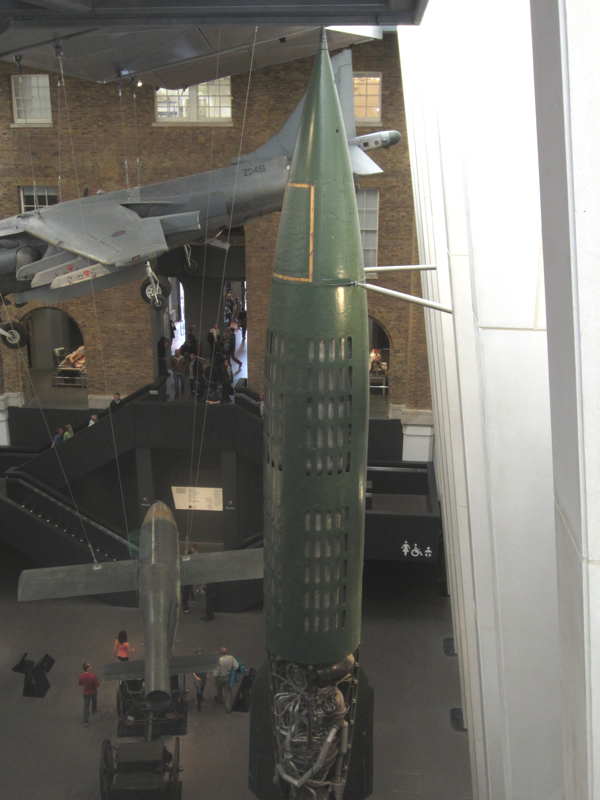
|
|
German V-1, Imperial War Museum The V-1 was developed at Peenemünde Army Research Center by the Nazi German Luftwaffe during the Second World War. During initial development it was known by the codename "Cherry Stone". The first of the so-called Vergeltungswaffen series designed for terror bombing of London, the V-1 was fired from launch facilities along the French (Pas-de-Calais) and Dutch coasts. The first V-1 was launched at London on 13 June 1944[6]), one week after (and prompted by) the successful Allied landing in Europe. At its peak, more than one hundred V-1s a day were fired at south-east England, 9,521 in total, decreasing in number as sites were overrun until October 1944, when the last V-1 site in range of Britain was overrun by Allied forces. After this, the V-1s were directed at the port of Antwerp and other targets in Belgium, with 2,448 V-1s being launched. The attacks stopped when the last launch site was overrun on 29 March 1945. Photo 142a, May 2015 |
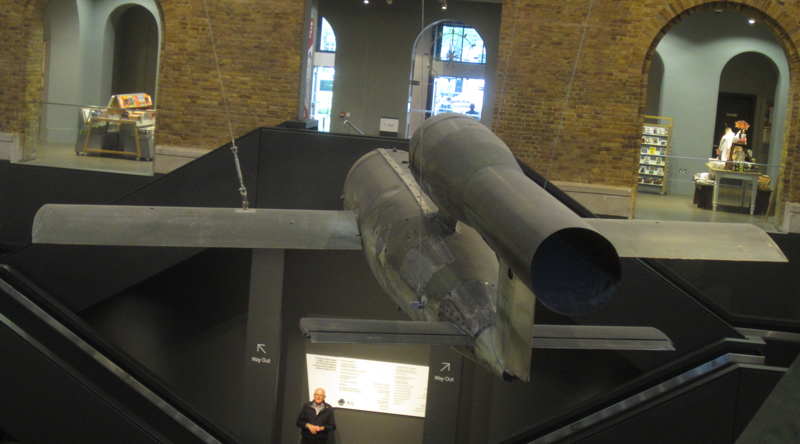
|
|
The Harrier Jump Jet, Imperial War Museum The Harrier, informally referred to as the Harrier Jump Jet, is a family of military jet aircraft capable of vertical/short takeoff and landing (V/STOL) operations. The Harrier was developed in Britain to operate from ad-hoc facilities such as car parks or forest clearings, avoiding the need for large air bases vulnerable to tactical nuclear weapons. Later the design was adapted for use from aircraft carriers. The Harrier is also distinct as being of modern era, yet subsonic, contrasting with most of the major Western post–World War II–era fighter aircraft, which tend to be supersonic aircraft. Photo 123a, May 2015 |

|
|
Staff car, Imperial War Museum Staff car, a Humber, of General George Montgomery Photo 144a, May 2015 |
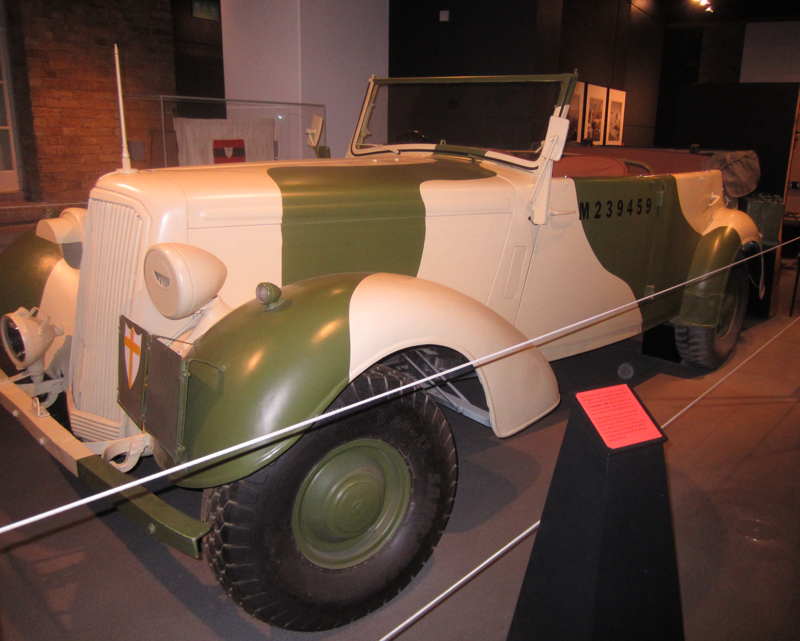
|